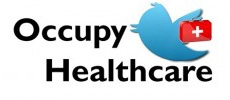Every report of late confirms what we already know about health disparities: they are growing worse. A cursory view of the figures below show how on each factor of comparison, including gender, race, and economic status, we as Americans are not doing a good job of taking care of our fellow neighbors. As you review these trends, think about what you want to fix to remedy what ails our society. What concrete action can each of us take to compel change?
Health Snapshot
As important as gender, race, and ethnicity are in the health divide, location matters even more. When we advocate for change it is important to recognize that the most neglected sectors of society are where the greatest differences can be made. In the October 2011 issue of Health Affairs, the publication noted that mortality risks are higher for rural white and minority groups versus urban dwellers, attributed mainly to lower education levels, depressed incomes, and lack of health insurance.
There is another phenomenon that envelops the most disenfranchised sectors of society: stress. Health Affair writers Steven Woolf and Paula Braveman found that for people living in poverty, they experience stress that triggers cortisol and epinephrine levels that impede the immune system. Long-term effects of immune inhibition can in turn lead to inflammation and co-morbidities such as diabetes or heart disease. Hence, the cycle of sickness is borne in squalor.
These disparities are intolerable and expose the disconnection between who we are as a society and our healthcare system’s performance in stark terms. The Commonwealth Fund recently issued its report on international healthcare performance, finding that in the U.S. many doctors and hospitals believe they are unable to provide optimal patient care because of insufficient data, poor coordination with other providers, and a payment system that rewards services not results (emphasis mine). We have truly forgotten what healthcare is about: helping people stay and get healthy. Let’s seize this #OccupyHealthcare movement to demand better, equitable, and accessible care for all of us. Our lives depend on it.
Actions to Take
Given the situation described above, it is easy to feel overwhelmed, but there are specific actions you can take. Some of you may be quite impassioned, while others might have a small amount of time or bandwidth to offer. No matter where you are on the support thermometer for #OccupyHealthcare, there is some concrete activity for you to join in. See some of the ideas we suggest, or come up with your own variation and take part!
All feedback is welcome to Carmen Gonzalez by adding your comments below or reaching me at @crgonzalez.
Sources for Health Snapshot Graphic:
- HRSA Issues 2011 Report on the Health Status, Health Behaviors and use of Health Care by U.S. Women, Marketwatch.com, Nov.1, 2011, http://www.marketwatch.com/story/hrsa-issues-2011-report-on-the-health-status-health-behaviors-and-use-of-health-care-by-us-women-2011-11-01 referencing the Health Resources and Services Administration’s (HRSA) Women’s Health USA 2011 Report.
-
Dentzer S, A Nation At Risk for Wider Health Disparities, Health Affairs, October 2011, http://content.healthaffairs.org/content/30/10/1818.full.pdf+html
-
National Scorecard on U.S. Health System Performance, 2011, The Commonwealth Fund, http://www.commonwealthfund.org/Publications/Fund-Reports/2011/Oct/Why-Not-the-Best-2011.aspx?page=all
